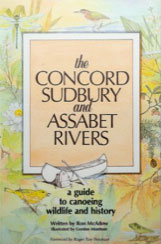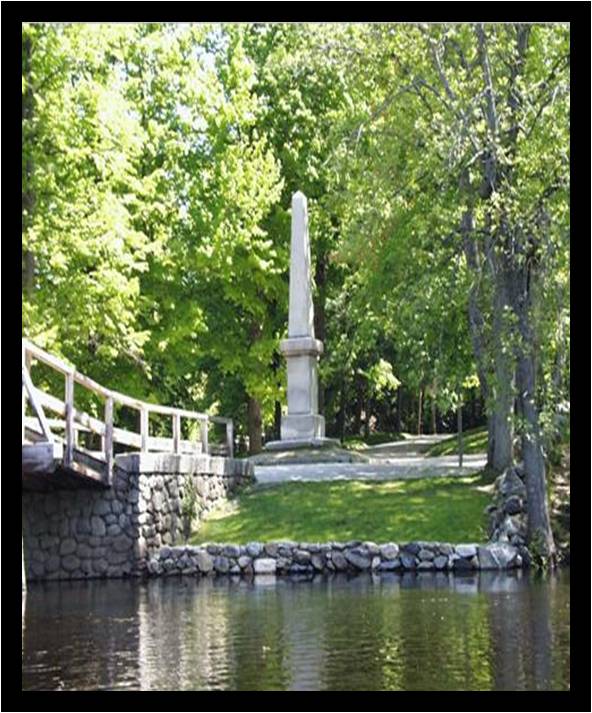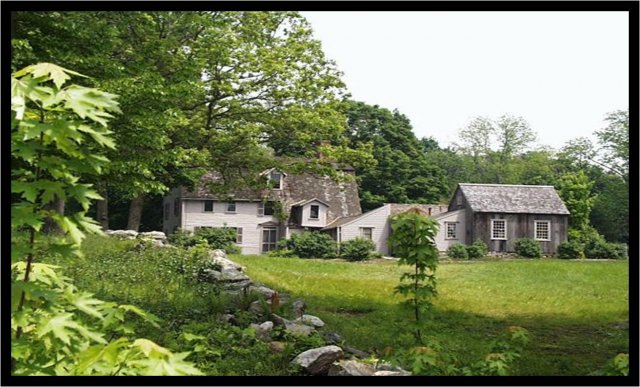In 1999 the U.S. Congress designated 29 free-flowing miles of these three rivers for their outstanding ecology, history, scenery, recreation values, and place in American literature
Recreation

The Sudbury, Assabet and Concord Rivers provide a range recreational opportunities to those within the greater Boston area. A natural respite within the urban area, the rivers offer occasions for hiking, birding, fishing, and boating. They are also a great educational resource to teach students about the ecology of river systems.
Great Meadows National Wildlife Refuge, Minute Man National Historical Park and locally owned conservation land (see Sudbury Valley Trustees for maps) have protected much of the rivers' shoreline. Many trails wind through the woods and open meadows along the rivers.
The rivers flow slowly, and so are generally appropriate for boaters, including beginners. A local boat livery, South Bridge Boat House, on the Sudbury River rents boats to visitors. It is also possible to launch your own boat at one of many access points. Some of these sites are boat ramps suitable for trailered boats.
Paddling Resources
Explore OARS new interactive river recreation map, designed to help paddlers, walkers, and outdoor enthusiasts navigate the SuAsCo watershed.Whether you’re looking for a tranquil paddle, an adventurous trip, or a scenic walk, these maps are your guide to the treasures of our rivers.
OARS Interactive River Recreation Maps
Additional information:

The Concord, Sudbury, and Assabet Rivers, a guide to canoeing, wildlife and history by Ron McAdow.
Scenery
Paddle down the river, and you are in a different world. The shore line is remarkably undeveloped, and the scenery is quite varied. A trip down the Assabet is like moving through a dense forest with trees overhanging the water. The Sudbury River winds through vast wide floodplains, the sky is big and the views are long.
History

Abundant food sources and their usefulness for travel made these rivers important to Native Americans, whose occupation is documented by numerous rich streamside archaeological sites.
Natural river meadow hay drew English settlers to the valley in the 1630s, in what became the towns of Concord, Wayland, and Sudbury.
Abundant food sources and their usefulness for travel made these rivers important to Native Americans, whose occupation is documented by numerous rich streamside archaeological sites. River meadow hay drew English settlers to the valley in the 1630s, in what became the towns of Concord, Wayland, and Sudbury.
When, in the following century, troops were sent to Boston to enforce colonial rule, these inland towns organized citizen soldiers and stockpiled weapons. On April 19, 1775, British troops attempted to destroy these supplies. Local militia, including specially trained companies called Minutemen, turned out and exchanged deadly fire with the British at Concord's North Bridge. Historians regard the fight at the bridge as the colonists' first forcible resistance in the American Revolution.
Additional information:
Minuteman National Historical Park
Literature

In the mid-1800s, the town of Concord was central to a philosophical movement called Transcendentalism. Ralph Waldo Emerson wrote his pivotal essay "Nature" in the Old Manse on the bank of the Concord River just above the Old North Bridge. Nathaniel Hawthorne and his wife Sophia Peabody honeymooned in the same house; he etched their names in the windowglass and in 1846 published his short story collection Mosses from an Old Manse. Henry David Thoreau's cabin at Walden Pond was less than a mile from the Sudbury River; during his residence there he wrote A Week on the Concord and Merrimack Rivers.
In the wake of these luminaries, the rivers' celebrity was maintained by admirers such as guidebook writer George Bartlett and naturalists William Brewster, Edwin Way Teale, and Ann Zwinger. Brewster described, in his journals, observations of bird life from Fairhaven Bay to Billerica. Teale and Zwinger collaborated on A Conscious Stillness, an account of their exploration, by canoe, of our rivers.
Additional Information:
Sudbury River Literary Map and Excerpts (PDF, 400kb)
"Recreation on Concord's Rivers in the 19th Century" by Leslie Perrin Wilson, Special Collections Librarian, Concord Free Public Library
Ecology

Corridors of natural life, our rivers are both home and highway to a wonderful variety of plants and animals. Great blue herons have nest colonies nearby, and present themselves for admiration, stately on the wing or stalking prey in shallow water. Osprey glide over the heads of boaters, who occasionally witness their talons-first plunge into the river as they attempt to capture fish. Over two hundred bird species nest in or visit riverside areas. Otters, muskrats, beaver, and mink swim alongside painted and snapping turtles, large-mouthed bass, pickerel, and many smaller fishes. The food chains leading to the top predators rely on invertebrates such as whirligig beetles, and, ultimately, on plants. Cattails, buttonbush, and red and silver maples are typical native riverside flora.
Despite the long history of human settlement, nearly 4,800 acres of wetland along the rivers support 13 state listed, river-dependent vertebrate, mussel and amphipod species. Twenty one species of state listed plants are found within one tenth of a mile of the river and over 221 species of birds have been recorded at Great Meadows National Wildlife Refuge.
The rivers are classified as warm water fisheries supporting populations of largemouth bass, small mouth bass, pumpkinseed, yellow perch, black crappies, brown bullhead and others. OARS website contains information about fish and other aquatic wildlife, river ecology and the habitat quality of the three rivers.
Several species of exotic, invasive plants are fairly common along the rivers including purple loosestrife, glossy buckthorn and water chestnut. Because of their aggressive nature these species are viewed as undesirable and threaten the ecosystem balance. More discussion of this issue under Invasive Species Management.
Additional information:
Great Meadows National Wildlife Refuge
Watershed, wildlife, water quality and river studies at the OARS website.
Learn more about the animals on our trails at SVT’s Nature Sightings webpage.

